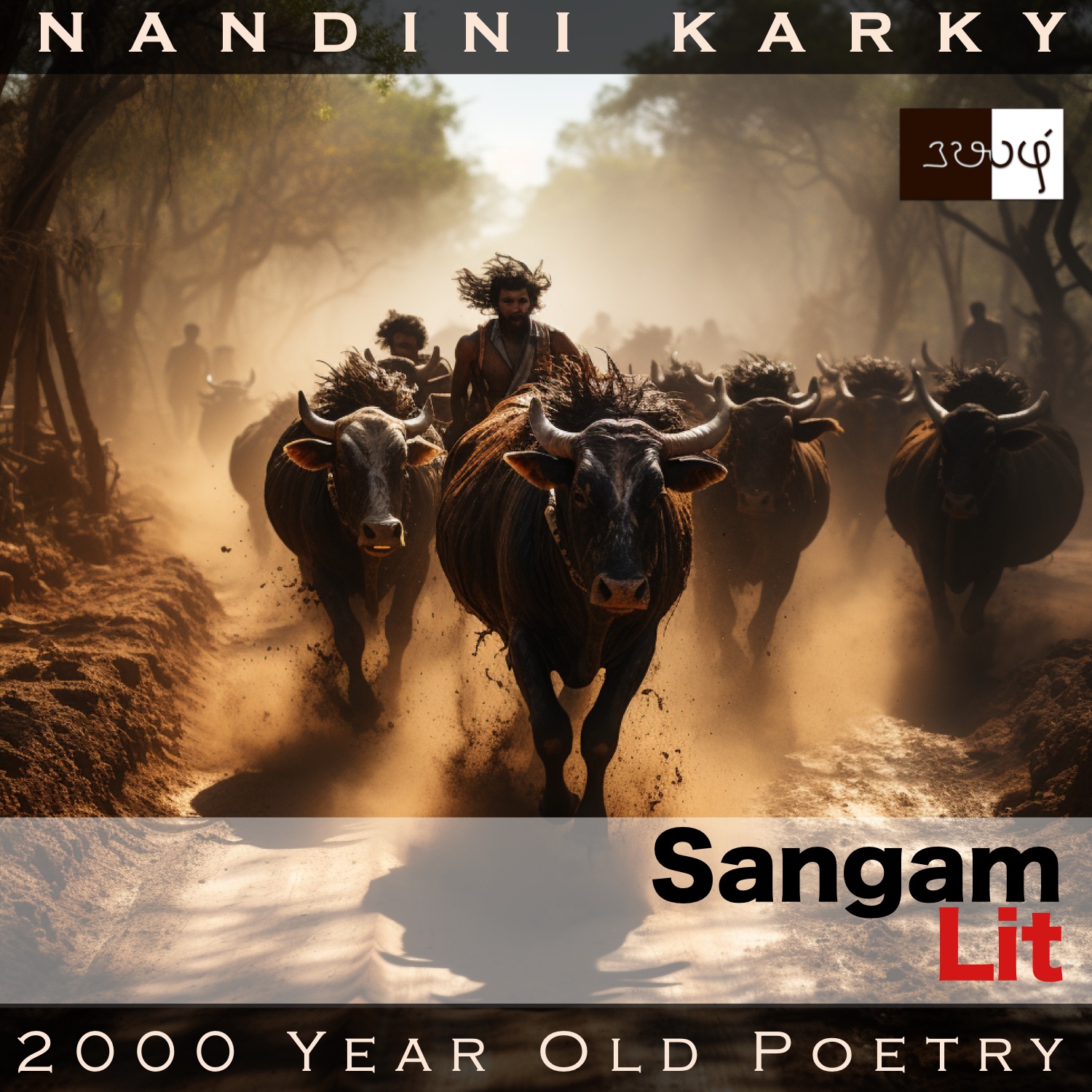Podcast: Play in new window | Download
Subscribe: Apple Podcasts | Spotify | Amazon Music | Android | iHeartRadio | TuneIn | RSS | More
In this episode, we listen to instructions rendered to prepare for a welcome party, as portrayed in Sangam Literary work, Puranaanooru 262, penned by the poet Madurai Peraalavaayar. The verse is situated in the category of ‘Vetchi Thinai’ or ‘Cattle capturing’ and speaks about the efforts of those who aid a leader in his mission.

நறவும் தொடுமின்; விடையும் வீழ்மின்;
பாசுவல் இட்ட புன் கால் பந்தர்ப்
புனல் தரும் இள மணல் நிறையப் பெய்ம்மின்
ஒன்னார் முன்னிலை முருக்கி, பின் நின்று,
நிரையொடு வரூஉம் என்னைக்கு
உழையோர் தன்னினும் பெருஞ் சாயலரே.
A short song dealing with what was considered an act of valour in the past, which was to steal cattle from the enemies! The poet’s words can be translated as follows:
“Filter the toddy; Slaughter the male goat; Under the thin-legged canopy spread with fresh leaves, scatter generously the young sand brought by river streams; Vanquishing the vanguard of the enemies by standing at the rear, the helpers of my lord, who arrives here with a huge herd of cattle, are more drained than he is!”
Time to delve into the details. The poet starts by listing out the activities to be done immediately, which is to squeeze and filter the liquor and then to kill and cook a male goat. A question rises in my head as to why, specifically, a male? Could it be because the male was thought to have more flesh and vitality than a female goat? The perception of these Sangam folks through their observation and instinct has been established by different studies such as this article on the comparison of meat production from male and female goat kids, published in ‘The Journal of Agricultural Science’ by Cambridge University Press in 1999. Science and Sangam Lit shake hands once again!
Returning to the core theme, it’s evident that food and drink is being readied in copious amounts for some occasion. From refreshments, the poet turns to the venue and instructs that lots of sand, which were brought down by gushing wild rivers, must be brought here and spread under the pavilion, which stands on thin legs, covered with thick leaves. Looks like a soft seat for tired glutes is getting ready! Finally, the poet informs us all these preparations are being done for the leader’s troop. The leader is now returning with a huge herd of cattle and those men, who stood behind him, at the rear, resisting and defeating the attack of the enemies, must be even more fatigued than the leader, the poet concludes.
Rare to see a Sangam verse turning the focus from the leader of a group to those nameless others, who had aided him in his task. Be it age-old Puranaanooru poems or modern narrations in today’s techno era, the spotlight often only falls on one person in a mission. This makes for a tight screenplay because our attention is not scattered and it makes it easier for us to comprehend the story. However, the deeper truth is that behind great accomplishments, seemingly done by a single invincible person, stand countless others, invisible, without whom there would be no cause for celebration!




Share your thoughts...